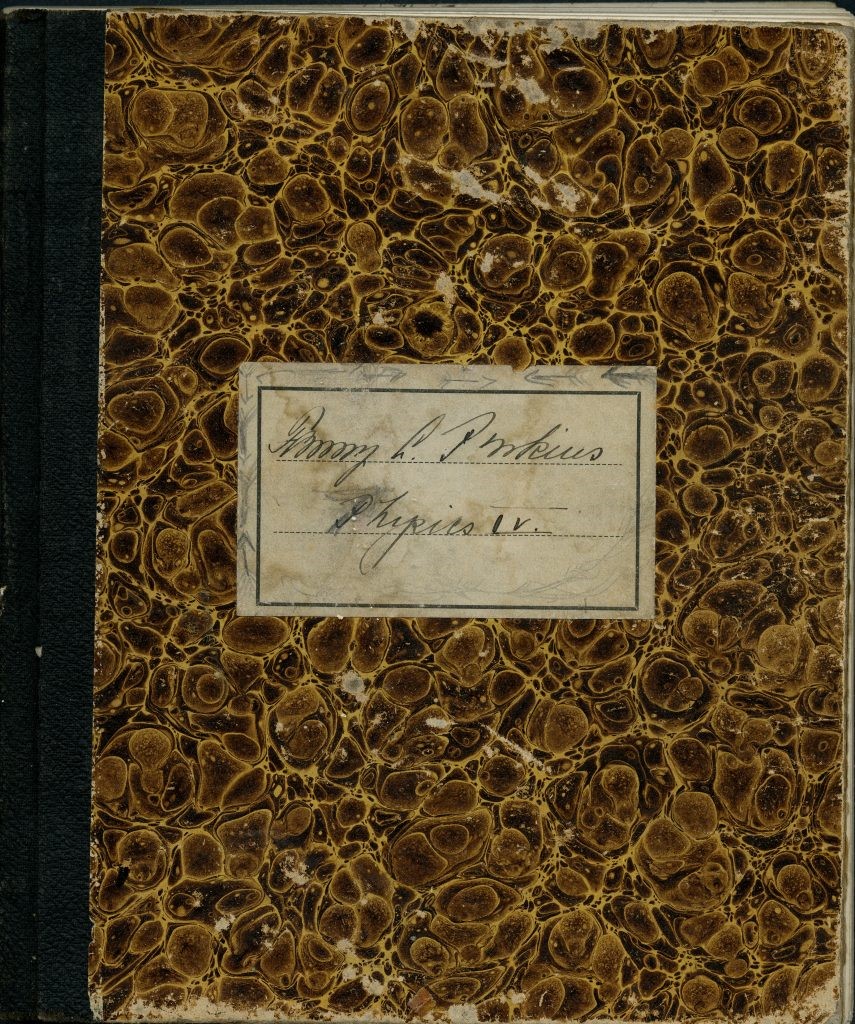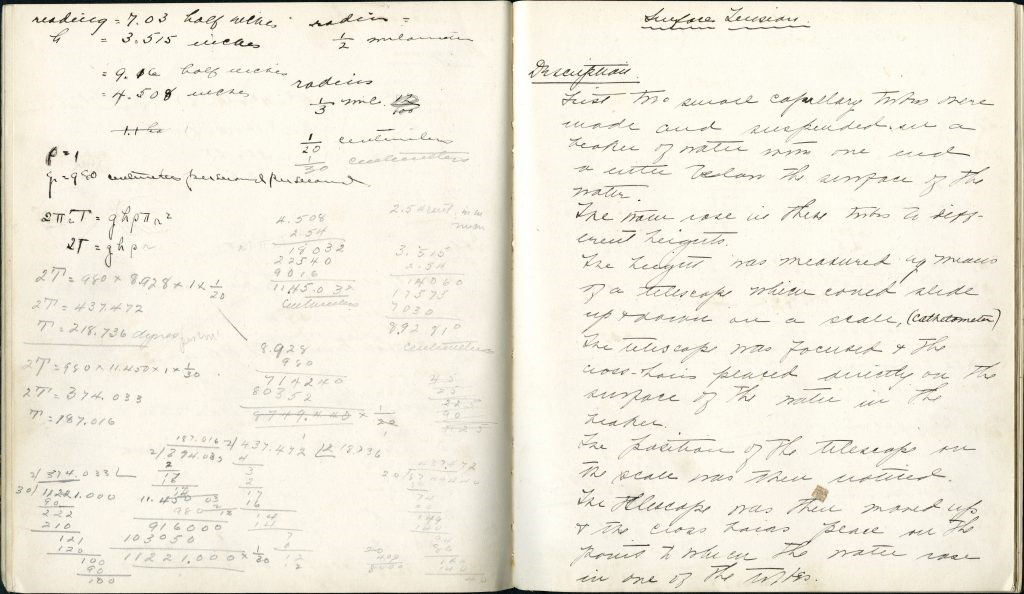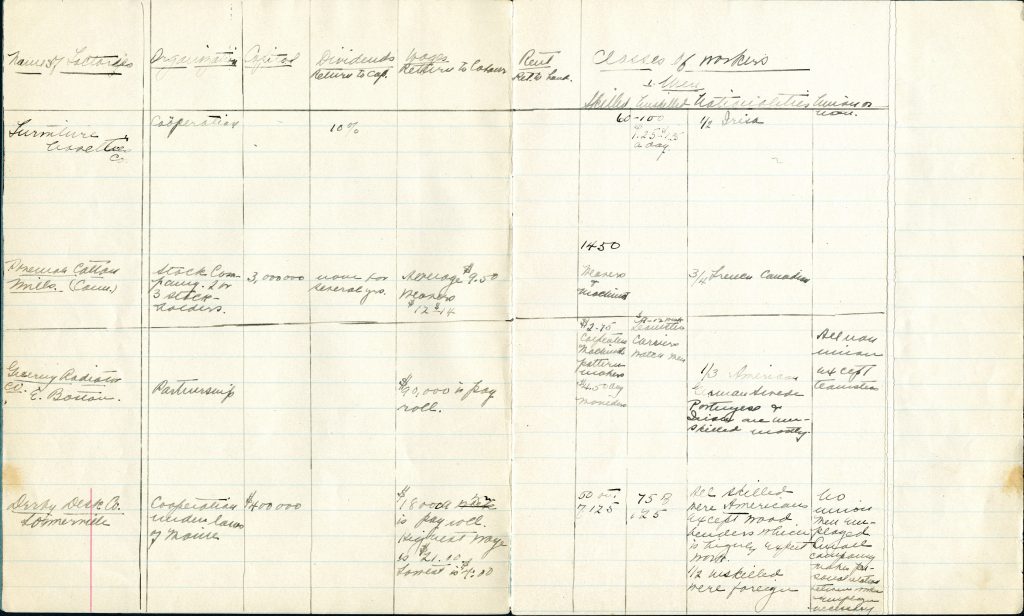

Chemistry was a required course, which was the original reason that Perkins decided to take it her sophomore year. She struggled immensely at first, to the chagrin of her professor, Nellie Esther Goldthwaite. Rather than wallow in humiliation, Perkins pushed through the class, even learning to enjoy it. In fact, she enjoyed it so much that she majored in chemistry, with none other than Goldthwaite as her advisor. These lab instructions show what types of experiments Perkins would have performed as a student in 1899.
Between her duties as class president, taking part in several plays, and all the other stresses that come with being a senior, Perkins initially decided to ease up on the difficulty of her course schedule. However, her advisor, Nellie Esther Goldthwaite, adamantly refused such a thing to come to pass. Instead, Goldthwaite persuaded Perkins to take physics IV, a highly demanding course that confined Perkins in the lab more often than she would have preferred. This notebook is filled with complex equations and notes, proving Perkins remained a diligent student despite her misgivings about the whole situation.
In 1902, Perkins took Annah May Soule’s political economy class. In a time where most political and history classes were expected to focus on large events or topics, such as the Civil War or Bill of Rights, Soule deviated from the norm by having her class visit factories in the Holyoke area. Perkins used several categories to describe the factories, taking note if they were dirty or lacked unions. This prompted her concern for the pay and safety of factory workers, which she would carry with her long after graduation.


